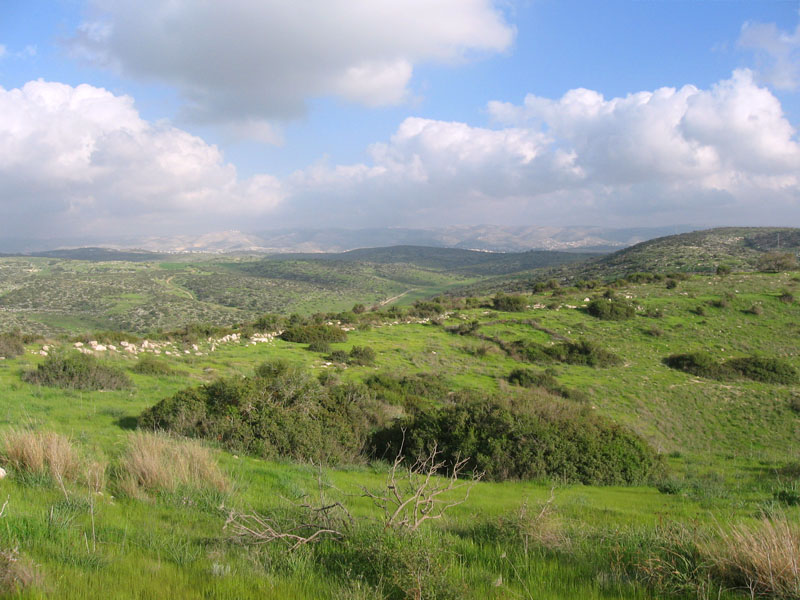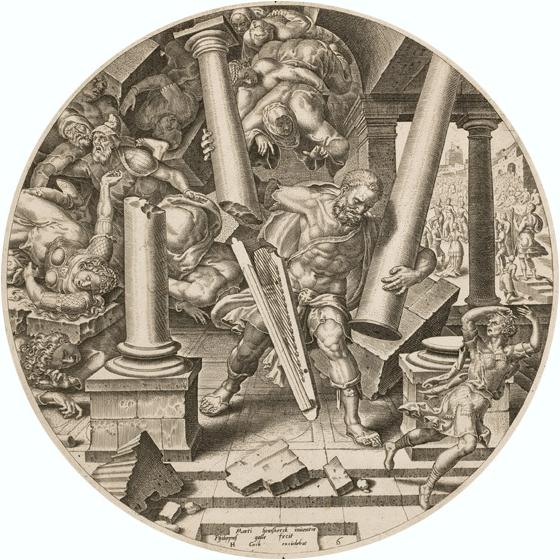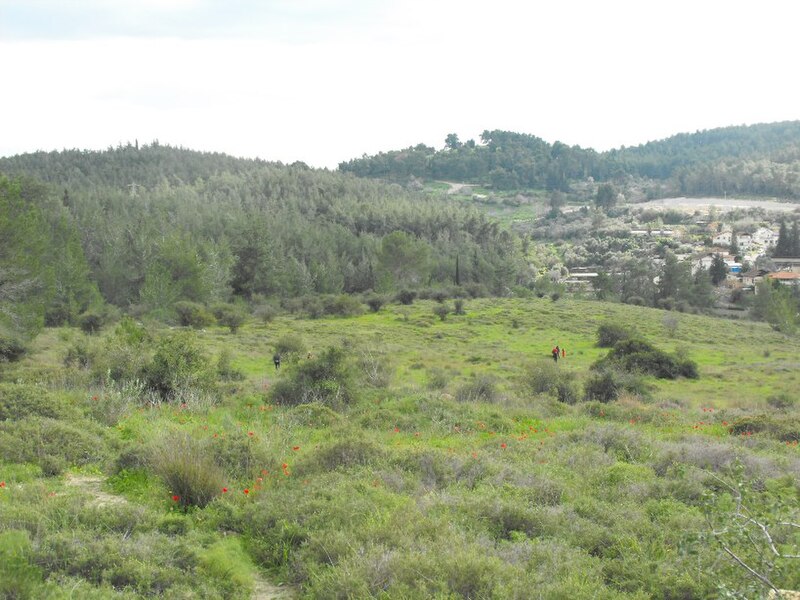Of all the nations that have a bad rap in Western civilization, perhaps none has a more unfavorable reputation than the Philistines. In modern English, we use the term “Philistine” to refer to a crude or uncivilized person, who is “guided by materialism and is usually disdainful of intellectual or artistic value” (Merriam-Webster). The origin of this reputation is found in the Hebrew Bible, where the Philistines are the “bad guys”, the arch-rivals of the Children of Israel. For centuries, the two nations stood in a state of quiet antagonism punctuated by intermittent warfare, such as the famous Battle of David and Goliath.

Tel es-Safi, which has been identified as Gath, one of the five urban centers of Philistine power, along with Ashdod, Ashkelon, Ekron and Gaza (1 Sam. 6:17) and the hometown of Goliath (1 Sam. 17:4).
This state of conflict was certainly the case under David, but it was even more pronounced in earlier generations, before the establishment of the united kingdom in Jerusalem around 1000 BCE. In this post, I would like to take a closer look at the Period of the Judges, when the Israelites were led by charismatic warriors. One of the most peculiar judges is Samson, who was more of a popular folk hero than an effective military leader. In this edition of Let’s Take Five will examine five places mentioned in the biblical story of Samson.

A compilation of the glass and faience inlays depicting the traditional enemies of Ancient Egypt, found at/by the royal palace adjacent to the temple of Medinet Habu, from the reign of Ramesses III (1182-1151 B.C.) Representations are (in order) a pair of Nubians, a Philistine, an Amorite, a Syrian and a Hittite. On display at the Museum of Fine Arts, Boston.
First a few words about the heathen nation that Samson spent his entire life flirting with: the Philistines. Known to the Egyptians as the PRSTW they were one of several ancient seafaring nations known as the “Sea Peoples” who originated in the area of the Aegean Sea (between modern Greece and Turkey). For complex geopolitical reasons, they left their Aegean homeland in approximately 1300 BCE and sailed southeast, coming into conflict with the Egyptians. Defeated, they headed north to the humble Land of Canaan. They entered Canaan in the 12th century BCE, around the same time that another foreign nation – the Israelites – was also entering the land.

This map shows the region controlled by the Israelites in the center pink. The Philistines control the area on the lower left in light green. Between them is the Shephelah in yellow. The birthplace of Samson between Zorah and Eshtaol is found just to the right of the word “Timnath”.
But whereas the Israelites led by Joshua conquered the mighty cities of Canaan from east to west, the Philistines entered the land in the opposite direction, from the Mediterranean Sea eastwards. Inevitably these two conquering peoples would come to clash. This is precisely the political situation that serves as the backdrop for the biblical books of Judges and Samuel. The Israelites dominated the Central Hill Country settling cities such as Hebron, Shechem and Gibeon. The Philistines dominated the Mediterranean Coastal Plain setting in Gaza, Ashdod and Ashkelon. Between them lay the narrow buffer zone of the Shephelah (“lowland”) foothills.

A view of the fertile rolling hills of the Shephelah, which functioned as a border zone between the Philistines and the Israelites for hundreds of years in the biblical period. The considerably higher Central Hill Country dominated by the Israelites is visible in the distance.
This is precisely the reason why the cities of the Shephelah such as Bet Shemesh, Azekah and Socoh feature so prominently in this part of the Hebrew Bible. This is certainly the case when we read the four chapters dedicated to the story of Samson (Judges 13-16). Samson is a tragic figure. He was endowed with superhuman strength but instead of defeating the Philistines, he wasted his gifts on courting women. Let’s have a look at some of the places where Samson spent his time.

Philip Galle, Samson Destroying the Temple of the Philistines, 16th cent.
(1) The first site we will look at is the village of Zorah, the hometown of Samson’s father Manoah (Judges 13:2). Zorah is located a few miles north of Beth Shemesh, in the territory assigned to the tribe of Dan (Joshua 19:41). But in effect, it was taken over by Judah according to Joshua 15:33. In the photograph below you can see what the area looks like on a typical spring day. Note that the grove pine trees in the background is non-indigenous to the Land of Israel. The small trees and shrubs in the foreground are much more typical of what the region looked like in the time of the Bible.

(2) The second site we will look at is Eshtaol which is mentioned in the story of the birth of Samson:
The woman bore a son, and named him Samson. The boy grew, and the Lord blessed him. 25 The spirit of the Lord began to stir him in Mahaneh-dan, between Zorah and Eshtaol. (Judges 13:24-25).

The modern village of Eshtaol is located on the site of the biblical village of the same name.

This is what the Sorek Valley looks like in the immediate vicinity of Zorah and Eshtaol. It is no longer a deep canyon, as it appears in the following image taken in the Central Hills.

The Sorek Valley is one of the most impressive wadis that evacuates rainwater from the Judean Central Hills westward back to the Mediterranean Sea. Most of the year it is dry and can be used for transportation. Samson was born alongside this valley and followed it east to Philistia, where he met the women who were the cause of his eventual downfall. Since the late 19th century this valley has been the route used by the railway linking Jerusalem with Tel Aviv (Jaffa), as seen in the image above.

The mouth of the Sorek River, where it empties out into the Mediterranean Sea at Palmakhim Beach








Join the conversation (No comments yet)